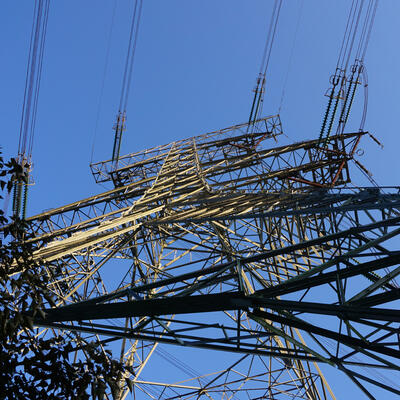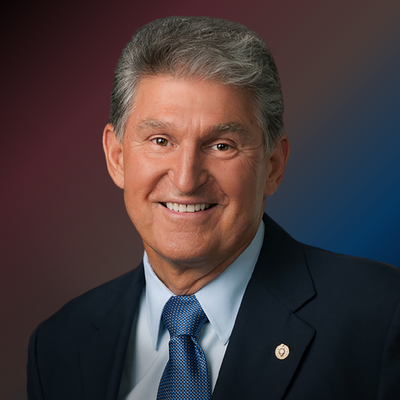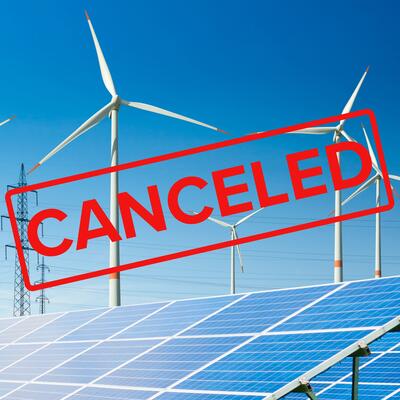Tech to the Rescue?
Guests

Saul Griffith

Valerie Shen

Michael Wilshire
Summary
Does the technology to stop the worst of climate change already exist – and if doesn’t, can we afford to wait for it?
“It's not very clear to me that with the technology that we have today we can move into a world where nine, 10 billion people are living middle or upper-middle-class lives and we’re still keeping emissions at a level that are sustainable,” says Valerie Shen, Chief Operating officer of the venture capital firm G2VP.
Shen notes that many companies are deploying technologies that already work in ways that are sustainable and profitable, and that contribute to solving the climate crisis. But she believes that new technologies are needed to reduce emissions sufficiently.
“My team doesn't feel that we necessarily have the expertise to be investing in some of these risks,” she adds,”but I don't think that that necessarily means no one should be doing it.”
Inventor and entrepreneur Saul Griffith sees it differently. “The technology is there,” he says enthusiastically, “It’s now down to the politics and the financing that could actually make our future come true where we get to live our lives, have cheaper energy, and do it with zero carbon.”
For Griffith, getting to zero carbon is technologically possibly now, but only if we commit immediately to electrifying everything. “The biggest efficiency measure there is by far is the act of electrification and driving those electrons with renewable generation,” he says, “It needs to be not just true for electric vehicles, it needs to be true for the heating systems in our homes, it needs to be true for our new power plants, so all new power plants need to be solar, wind, nuclear, geothermal, or something that doesn’t emit carbon.”
In an ideal world, existing technologies would be fully deployed alongside continued innovation. “I think the sort of incremental innovation we've seen in established energy technology and things like storage are very important because that’s what driven the cost down,” says Michael Wilshire, Head of Strategy at Bloomberg NEF. “I think [innovation] is actually something that’s speeding up and that’s a very important message I think for the future.”
This program was recorded on August 18, 2020.
Related links:
Otherlab
Rewiring America
BNEF Pioneers
G2VP
Full Transcript
Greg Dalton: This is Climate One. I’m Greg Dalton. [pause] Americans love technology, and look to it to solve many of our problems – including climate.
Valerie Shen: We think there are a lot of great companies that are deploying technologies that already work in ways that are sustainable, profitable, make our lives better and somehow contribute to solving the climate change crisis.
Greg Dalton: From mapping weather patterns with pinpoint accuracy to engineering algae that gobble up carbon dioxide, climate tech is full of breakthroughs.
Michael Wilshire: We shouldn’t think of innovation as something that’s incremental and gradual. I think it’s actually something that’s speeding up.
Greg Dalton: But as countries look to re-open in a post-pandemic world, are we innovating fast enough?
Saul Griffith: The technology is there. It’s now down to the politics and the financing that could actually make our future come true where we get to live our lives, have cheaper energy, and do it with zero carbon.
Greg Dalton Tech to the Rescue. Up next on Climate One.
---
Greg Dalton: Does the technology to stop the worst of climate change already exist – and if doesn’t, can we afford to wait for it? Climate One conversations feature energy companies and environmentalists, Republicans and Democrats, the exciting and the scary aspects of the climate challenge. I’m Greg Dalton.
Greg Dalton: Technology has helped the world survive, thrive, and stay connected through the COVID-19 lockdown. But does tech hold the same promise in the fight to solve climate change?
Valerie Shen: It's not very clear to me that with the technology that we have today we can move into a world where nine, 10 billion people are living middle or upper-middle-class lives and we’re still keeping emissions at a level that are sustainable.
Greg Dalton: Valerie Shen is Chief Operating officer at the venture capital firm G2VP. She’ll join us later in the program, along with Michael Wilshire, Head of Strategy at Bloomberg NEF. First, a techie’s view on climate tech.
Saul Griffith: The robots we have today are fat, they’re blind, they’re stupid, and they’re insensitive.
Greg Dalton: Saul Griffith is Founder and Chief Scientist of Otherlab, an independent R&D lab and co-author of a new report on Rewiring America. His book Electrify is due out in the fall of 2021. We begin by thinking about whether the narrative of the past 50 years – of increasing efficiency and reducing consumption – has been effective in addressing the climate challenge.
Saul Griffith: It has not been a narrative that politically works terribly well and hasn't really changed our behaviors enormously. We still in fact average American homes have grown in size vehicles have grown in size. So although the technology did make them more efficient a lot of those efficiency wins we lost in growing bigger. That narrative was born of the oil crisis so that's when we first started the Department of Energy and Energy Information Administration. And that original oil crisis problem was a supply problem. We were importing too much oil from the Middle East that was about 10% of the American energy supply at that point. And so it was conceivably solvable with efficiency if you got 10% more efficient cars and 10% more efficient homes, you would likely solve that problem and that became the sort of the clean tech narrative. And we’re still living that one down now in climate change, but the climate change problem is different. We need to transform the entire energy system to be zero carbon and you can't efficiency your way to zero unless we give up a lot of the luxuries that people think are human right basically at this point.
Greg Dalton: Right. And that narrative is often seized upon as you know people, you know, you can’t fly an airplane the Green New Deal is gonna take away your hamburgers. That narrative of less or sacrifice is easily preyed upon. But the alternative to that is sort of techno optimism that's the no sacrifice narrative. Have it all and keep our home too, right. Is that narrative the one you think that will address climate change?
Saul Griffith: I think that narrative is much closer to the narrative that can win. I think there are flaws in that narrative. We could solve climate change, yet still destroy the oceans with plastics for example. I think we can have a very positive conversation that says we can have most of what we have and life will improve. I think you can say that absolutely with a straight face while solving climate change. And we do have solutions today ready to go that will solve, completely decarbonize the United States and have people living roughly driving the same size cars living in the same size houses but just doing it with much better technology that already exists to enable that.
Greg Dalton: And what do you think there’s often a debate now particularly in the Democratic Party like going big, the Green New Deal, there was some competition of renewed ambition among the Democratic candidates in the primaries last year with trillions of dollars escalating plans far bigger than before. So is this the time for big ambition or should we start with what’s politically possible in a politically divided country?
Saul Griffith: Quite frankly, we have to -- we only have one choice which is to go big. If we wish to meet what the earth would like us to do and what the best scientists and that scientists agree is the target we should hit which is 1 1/2° to 2°. We have to get even bigger in some respects than the Green New Deal and the climate plans that we heard of. Because basically in the early 2000's we started to bake into the United Nations climate models negative emissions. They may not happen so that sort of shortens our timeline. We also don’t really build into those climate models what's called committed emissions, so they’re the emissions that machines that already exist today will continue to emit throughout their lifetime. So if we built a natural gas power plant 10 years ago, you know, that thing is naturally gonna live another four years. If you bought a car last year you don't want to sell that car right away, you want to get 10 more years out of it. And the fuels that all of those machines that already exist or the emissions that they will emit while burning fuels in their lifetime already take us over 1 1/2°. So what djoes that really mean? The only way to hit a target under 2°, which I firmly believe is what we should do, is to as quickly as possible ramp up our production of the solution technologies such that we can then deploy what's called the 100% adoption rate. Meaning last year in California I think it was about 10% of vehicles sold were electric it's about 2% nationally. We need to make that number 100% as soon as possible. It needs to be not just true for electric vehicles it needs to be true for the heating systems in our homes. It needs to be true for our new power plants, so all new power plants need to be solar, wind, nuclear, geothermal, or something that doesn’t emit carbon. And we need that to happen immediately. So in some respects it's not about politically possible it’s about what's technically necessary. But I think for the first time ever in human history I think we can now tell you a story that the technology is there and most certainly technology it’s now down to the politics and the financing that could actually make our future come true where we get to live our lives have cheaper energy and do it with zero carbon. And we could do it on the timeline required to be 2°, but it does require incredible political commitment and something that quite honestly looks like a World War II level of effort in terms of our industrial base.
Greg Dalton: Right. And I’ve been hearing that, you know, Pearl Harbor moment for more than a decade, frankly. You know the idea that we need a Pearl Harbor kind of mobilization, like the U.S. did in World War II where the government comes out and says motor companies you’re not making cars, you’re making planes, tanks you’re making merchant marine ships that sort of thing. The difference was though that, you know, there was a villain with a human face with the intent to do harm. Now in this narrative we don't have a villain with a human face and intent to do harm, we’re all complicit. So that mobilization is a lot harder when you don't have a Hitler and a Mussolini to go after.
Saul Griffith: Absolutely. I mean, I personally am motivated by Hitler or Mussolini of the species we will lose and the damage to ecosystems and the human tragedy that will unfold. But I recognize that that won’t get everyone to come along for the ride. So really and I think, you know, this is what I write about a lot these days. The exciting thing is we can now tell a story that everyone if they come along for that ride will have better health outcomes they'll have cheaper energy, driving will be cheaper and it's not exactly we can have our cake and eat it too but, you know, if we do it right when we get the financing policy right it will save everyone money. And so the unfortunate thing about the Green New Deal was it sounded like a competition to spend the most money. In some respects that is a result oddly of the way we count jobs that get created. So when economists try to create jobs they ask you how much money do you spend and then they divide that by the number of jobs created in an industry per millions of dollars spent. And so part of the Green New Deal was an effort to advertise enormous numbers of jobs because jobs are great people want jobs. And that's even more important now in the COVID world but it can lead you to then just talk about the top line expense. It's gonna cost $25 trillion, that creates 25 million jobs. But it scares people off because it sounds like it's gonna cost money. If you do a more nuanced calculation about household energy costs and what happens if we get battery prices and solar regulations and electric vehicles deployed and then financed at good low interest rates, you can actually start to tell a story about how every household saves money, every state saves money and you know, the whole country annually will save money on the finance cost of this transition versus the cost that we spend today on fossil fuels.
Greg Dalton: And as you look at the magnitude of the transformation that needs to happen and the math that you’d go deep, you’re a MacArthur genius winner, you go deep into the science and math of this. How scared are you?
Saul Griffith: I’ve been scared about climate and the magnitude of change that’s been required for 10 or 20 years. In that period I have had two children so I have a six-year-old and 11-year-old. And you can no longer afford fear once you have skin in the game like that and as absurd as what as it may sound that, you know, we will achieve that thing it was absurd to believe that we would achieve defeating Hitler when at the beginning of that war, America had basically no airplanes they had to use ice cream trucks for wargames at the American Army in 1939. So we had no equipment but we did it because we had to. And I think we will solve climate change because we have to. And I think, you know, basically we’re now arguing about whether we do it sooner or later. And I'm an enormous advocate I just start an organization called Rewiring America with a colleague Alex last year who started out there and just done a lot of work for the utility industry. And we firmly believe that we can bring that timeline forward a long way now with the right mix of technology policy and finance.
Greg Dalton: And one of the things that comes up there’s technology policy finance also individual action. So there's a debate here about individual action matters, it’s important for credibility more clarity not to be a hypocrite. Others say that individual action trivial can even lead to dangerous feel good illusion that you're solving a problem if you go vegan or recycle or buy an electric car. So where do you come down on the role of individual action is it necessary and sufficient or is it a distraction?
Saul Griffith: I think it is virtuous and I applaud everyone who takes individual actions. But numerically it just doesn't do it. You can't buy enough stainless steel water bottles, you can’t recycle enough packaging, you can’t take enough public transport to solve climate change. I’ve actually started to see this as a question of infrastructure. So the 20th century version or definition of infrastructure you conjure in your mind bridges and roadways and dams and large public works projects. And they bake into the world a way of being and a way of life. It’s the same with your own personal life. The transformations you need to do to decarbonize are a small number of things that are really infrastructure. They are decisions that you make once every 10 years. If you make those decisions correctly, you can then just go about living your life not emitting any carbon. If you make those decisions badly, you continue to emit carbon. Now the challenge with that means you can't decarbonize your life with your daily purchasing decisions. You can have your anxiety sitting in the tuna aisle looking at the 45 different tins of tune trying to figure out which one kill the fewest dolphins but it makes a very tiny impact on our emissions. The real decisions that count are what do you drive, can that be powered by zero carbon electrons, is there solar on your roof? Is the heating and cooling systems in your house driven by electricity? Is that electricity supplied by zero carbon sources? So it’s about your furnace, it’s about your water heater, it's about your car, it’s about your rooftop. And they are the things that as individuals we control. And from the household decisions that we can control that's roughly 40 a little more than 40% of all U.S. emissions. But if businesses have the same approach to thinking about it as an infrastructure and government and industry then we can solve this.
Greg Dalton: And you're a fan of the Energy Star Program. One thing you didn't mention was refrigerators, you know there's been some policy advances to --
Saul Griffith: Oh I’m gonna caveat you said I'm a fan of Energy Star. I think you can't not like Energy Star and efficiency program but it doesn't really get us to our end goal. So Energy Star Program and the CAFE fuel standards these are the 1970s thinking that gives us the efficiency dialogue. So slowly ever increase your mileage per gallon slowly increase your efficiencies in refrigerators. Unfortunately some of the efficiencies in refrigerators were lost by the growing waistline of American refrigerators. But you can't efficiency your way to zero. So in the case of vehicles we got to just skip a step and not go from 40 to 45 miles per gallon. We go from 40 miles per gallon to fully electric driven by solar, wind, geothermal, nuclear, hydro. The biggest efficiency measure there is by far is the act of electrification and driving those electrons with renewable generation. And honestly, if we do that, you can double the size of your refrigerator and we will still fix climate change.
---
Greg Dalton: You’re listening to a Climate One conversation about technology and the climate challenge. Coming up, more with inventor and entrepreneur Saul Griffith and others on whether climate tech is ready for primetime.
Valerie Shen: There's always a cautionary story about taking one example of a failed company and using that as a proof point that we shouldn’t invent new technologies. My team doesn't feel that we necessarily have the expertise to be investing in some of these risks, but I don't think that that necessarily means no one should be doing it.
Greg Dalton: That’s up next, when Climate One continues.
---
Greg Dalton: This is Climate One. I’m Greg Dalton, and we’re talking about technology as a climate solution. Clean tech was all the rage about a decade ago, but after a while investors realized that engineering heavy machinery or innovative chemicals took a long time, and a return on their investment could take years longer than the latest hit software or app. And then there are the failures. Climate One's Andrew Stelzer spoke to Paul Gipe, the editor of wind-works.org about a failed wind company that offers a cautionary tale.
[Start Playback]
Andrew Stelzer: In 2010 Urban Green Energy blasted out press releases about its new small wind turbines for homes and businesses. The New York City-based company had offices in London and Beijing. Paul Gipe had already written four books about wind energy and what he saw immediately made him a skeptic.
Paul Gipe: Urban Green Energy burst on the scene with this concept of putting vertical axis wind turbines on rooftops. They made a lot of outlandish claims as these companies do for example that the wind turbines will be silent, the wind turbines won’t kill birds that they’ll have high production and low winds. Wind turbines don’t produce a lot of electricity in low winds that’s just the physics of how wind turbines work. And they put these wind turbines in very highly visible locations not just one, two, inside the Eiffel tower.
Andrew Stelzer: Urban Green Energy got a lot of press. At this time Gipe says solar was still expensive. So lots of people were excited about the possibility of personal wind power everywhere, even on their homes. But there was a problem with the science.
Paul Gipe: Rooftop wind energy using small wind turbines doesn't work because there's not a lot of wind on top of buildings in the city. It might seem that because the building is tall that it’s in the wind but no, you need a tower that’s probably half the height of the building to get the wind turbine up above the turbulence caused by the building. So you still have to have a tower. The other reason is that small wind turbines because of the nature of the technology don't have the economies of scale as those giant wind turbines you see in Kansas or here in California. Some of the small wind turbines we put on rooftops have consumed more electricity than they generated which of course is not the point.
Andrew Stelzer: By 2016 the hype had faded. Urban Green Energy sold its wind business to a Chinese company and shifted its focus to solar.
Paul Gipe: In the grand scheme of scandals, frauds and flakes, Urban Green Energy and these rooftop wind turbines really are small potatoes. It's embarrassing. It detracts from the growth of wind energy it detracts from the usefulness that we see in renewable energy it feeds the criticism by those on the far right and in the fossil fuel and nuclear industry say, see, wind energy doesn't work.
Andrew Stelzer: The lesson Gipe says is we should be focusing on what we know works not chasing profitable moon shots to solve climate change.
Paul Gipe: I’m not a big fan of putting money into superduper new technology because I’ve been chronicling the failures of that. What I’m a big fan of is we have the technology today and if you want to make money in renewable energy it’s not a new invention it’s deploying it now. That is building wind turbines and solar panels, geothermal power plants biogas digesters I mean, there's so many things that we as Americans could be doing right now and should have been doing for the last 20 or 30 years. And so most of the time I see people who are trying to get rich where in renewable energy fail. In fact when inventors call me I tried to advise them that what they're trying to do is probably a mistake. And if you want to make a difference invest in that technology now to deploy it, get it out there.
[End Playback]
Greg Dalton: That was Paul Gipe energy analyst and editor of wind-works.org. I’m pleased now to welcome two guests to our conversation about technology and climate change. Valerie Shen, from Silicon Valley and Michael Wilshire from London. Valerie is Chief Operating officer of G2VP a venture capital firm that spun out of the white shoe firm Kleiner Perkins and she previously held positions at McKinsey & Company and Goldman Sachs. Michael Wilshire, is Head of Strategy at BNEF or Bloomberg New Energy Finance. For two decades he advised corporate clients at McKinsey & Company began his career working at Britain's Department of Energy. Valerie, I’d like to get your response to Paul Gipe’s point that climate change should involve deployment of proven technology rather than newfangled inventions. Be suspicious of the get rich schemes that are what many startups bring to VCs like you.
Valerie Shen: Yeah, so I think it’s a really interesting point. And in some ways aligns a lot with how we work at G2VP which is that we think there are a lot of great companies that exist in the world that are deploying technology that already work in ways that are sustainable, profitable make our lives better and somehow contribute to solving the climate change crisis. We absolutely believe that there are a lot of great investments in this space and they make a huge difference. So at face value I agree with a lot of what he says. I will say there's always a cautionary story though about taking one example of a failed company and using that as a proof point that we shouldn’t invent new technologies, right. Because it's not very clear to me that with the technology that we have today we can move into a world where nine, 10 billion people are living middle or upper-middle-class lives and we’re still keeping emissions at a level that are sustainable. Unless there's 100% clear path to that we should be inventing new technologies. My team doesn't feel that we necessarily have the expertise to be investing in those new technologies. So we’re not investing in some of these risks but I don't think that that necessarily means no one should be doing it.
Greg Dalton: Michael Wilshire your thoughts on whether we just need to deploy all if we deploy everything that we have we can get this done or do we need new innovations. I hear both things all the time.
Michael Wilshire: I think actually it’s both. I think the sort of incremental innovation we've seen in established energy technology and things like storage are very important because that’s what driven the cost down. There’s a strong learning curve effect from experience every time the volume of solar that’s installed is doubled cost have come down for about 28.5%. And that’s an incredible dynamic because you start to get actually increasing momentum, the cost come down, the economics improve more gets installed and the costs come down still further. And we’ve seen that with definitely with solar we’ve seen it with wind we’re also seeing it with storage. So I do agree that investing in the technologies and pushing them and not to mention is absolutely critical. At the same time we’re seeing new problem just emerged. We’re seeing challenges around how to integrate renewables into the systems there’s some very interesting technologies around for example virtual power plants where you can aggregate assets that provide flexibility services back to the grid and enable you integrate those technologies. Sorry, those renewable technologies. Unequally there are scenarios that are really important like the circle hard to evade setup so some of the process industries like for example steel, cement, ways of recycling. We’re seeing a lot of innovation around that. We’re actually running in the firm a competition called BNEF Pioneers we’ve been doing it now for 11 years looking for innovative relatively early stage companies that we believe and our external judges believe can have a real impact on the energy and related systems. And interesting actually three of them sort of the ten winners this year fall into that category. One is doing recycling with plastics using going right back to the fundamental oil. It’s not just about chopping up plastics and heating them. It’s actually going back to the fundamental oils to produce virgin quality plastic as you would from petrochemical process. Another is a company called Boston Metal that’s got a different technology for producing steel. Typically in a steel firm it’s you throw in a lot of coal the coal heats it up and it also acts as an agent for moving the oxygen off the iron oxide. That creates a lot of CO2 firstly by burning the coal and secondly by removing the oxygen which comes off in the form of CO2. And they’re using a molten oxide electrolysis process that is carbon free. Early stage company but if that, you know, succeeds and takes off in a big way that could have a revolutionary factor on the steel industry. And other examples that I can give you and there is like cement as well. So I think that new type of innovation around some of these new problems that we still have to solve is also very important.
Greg Dalton: Saul Griffith, Valerie Shen mentioned kind of the math the global math of 9 or 10 billion people living like people do listening to this radio show and podcast -- does that math even with, you know, better cement better steel all the things we’ve been talking about does that math still add, up 9 billion people living like Americans?
Saul Griffith: Michael mentions blast furnaces; my first job out of college or actually I was still in college was cleaning the carbon off the side sort of the blast furnace at BHP Steel Mills at Newcastle. We can improve the life of a population of 8 to 10 billion from what we do today, absolutely. And the great majority I'd say at least 85% of that problem we have technologies today that can do it. The future we want actually exists today and as Neal Stephenson the science-fiction writer wrote, it's just not equally distributed. What that really means in this case is it’s not happening in one geographic location. So it's an easy story to tell that story, solar wind electric vehicles for Australia, Canada, New Zealand, America -- well-resourced countries with low and medium population density. Some of Africa, Southern Europe if not Western Europe. But when places get cold or when the population density goes up that’s why we do need some breakthroughs either in very long distance transmission so they are importing energy as electrons or hydrogen or we need nuclear in those places because there’s just literally not enough space to put the renewable resources. And to answer your question, will everyone live like Americans? Probably not, I don’t think a lot of people want to, to be quite frank. Those countries that already do, which is, you know, Western Europe, Australia and New Zealand they won’t give up. A cute fact, Europe believe that they're better at fighting climate change than Americans forever. Actually it's really just an artifact of history; their cities are more dense and their cities are closer together, so they have less transportation and their heating system are more efficient. They are roughly the same. So all those people can roughly make it work out. So I actually have optimism that for the large bulk of this problem we can do it with technology we have on the table. We still need to solve the problems that are 1, 2, 3, 4, 5% problems. These are, you know, the 1% problem which is steel the 1% problem which is aluminum. The 7% problem which is emissions from refrigerants our air conditioners. We need to fix cement, cement is a 3, or 4% problem. And then agriculture is the remainder of our problem, another 5, 10% depending on how big you draw the circle around agriculture. Those things we do need new technology solutions but as Michael mentioned, there are companies working on all of those problems and I think that is promising. But let’s work on the 85% that we know we can solve today and, you know, that becomes the World War II industrial effort and then the Manhattan project is these remainder technologies that we need to round up fully decarbonizing.
Greg Dalton: If you’re just joining us we’re talking about technology and climate change in the COVID era with Saul Griffith, Founder and Chief Scientist of Otherlab an independent R&D lab. And Valerie Shen, Chief Operating Officer at G2VP a venture capital firm in Silicon Valley. And Michael Wilshire, head of strategy at BNEF joining us from London. I wanna pick up on mobility, that's one thing that’s been disrupted a lot during this COVID times people commuting patterns changing work patterns changing. Valerie Shen, how is commuting gonna change and how does that, you know, some carpooling technologies you’re investing in that you claim could be cheaper than Uber and Lyft. I'm concerned a lot of people are concerned that people are gonna hop in their cars they’re not gonna take transit we’re gonna have clogged freeways and single occupancy vehicles. We have this hellscape of mobility potentially coming at us.
Valerie Shen: It’s a great question super relevant now given COVID. What we've been seeing for almost a decade at this point even before any of the recent health concerns has been really what we call an unbundling of the car, right. So in the past we had one car that we owned it was an internal combustion vehicle we would use it to get from point to point go to a gas station. And we really now been getting transportation from other means. So this started with Uber chipping away at the need to own a car and use that for every purpose. It also means that you can have companies such as Turo one of our old portfolio companies that lets you rent a car easily on a daily basis. So instead of needing to have a minivan and a commuter car, you can just have one car that meets the bulk of your needs and have a shared vehicle for other parts of your life that are just more niche. It also means that we now have last mile transit opportunities where you could take scooters for shorter errands around town and not need to, you know, have a discrete choice between a car versus walking. And the reason that public transportation fits into all of this is that it’s just getting better over time. Cleaner, quieter and cheaper. So electric buses have 80% cheaper operating costs than diesel vehicles, right, which means that a lot of times cities are starting to think about making their public transportation free which really changes the game for consumers who now no longer have to think about having a public transit card and can just hop on the shuttle whenever they need. And what we’re seeing over all is that transportation becomes much of a communal solution where people are thinking about all the different ways they're going to piece together their needs and not just default to a vehicle. Then we come into this question of what does COVID do to all of this. And in the very beginning we thought that no one was going to use electric scooters or any sort of shared transportation but we’re now seeing that people have sort of, you know, had their few months of breakout and now are getting back to normal life in many contexts. One of our companies that you mention, Greg, is Scoop which is a ridesharing company often doing carpools for work. And the idea there with Scoop is if you can share a ride with one coworker, friend even if it’s a stranger to get from your home to the office it’s a much cheaper form of transportation than actually taking a taxi or any sort of rideshare because you're driving with someone who is anyway going that direction. So from a carbon emissions perspective you're also not creating an additional trip, you’re actually saving on the total amount of transit and you have a clear contact tracing. So in a COVID world you're not going to wonder, you know, who are the 8, 10, 15 people who have ridden in this car you just have one person that you're riding with to work, one person you’re riding back from work. And we think there's a lot of potential for creative solutions like this overall helping to make sure that we are not all dependent on our individual vehicles.
Greg Dalton: Michael Wilshire, it’s been about 10 years since electric cars were available in California, United States. We’ve heard Saul talk about 10% of California sales what's the path forward for electrifying personal mobility? How quickly can electric cars scale and when will they be cheaper to buy than gasoline internal combustion cars?
Michael Wilshire: It varies a lot from country to country. But on average if you look at the global level we’re expecting roughly 10% on new sales to be electric vehicles by 2025 going up to close to 30% by 2030 about 28% I think and 58% by 2050. And in some countries -- that’s off new sells by the way, that’s not vehicles on the road. Obviously vehicles on the road will be somewhat lower because you have to, it takes time to replenish. In some countries though those figures will be even higher so that’s an average and generally for example in Europe we’re expecting Europe to adopt particularly fast. In terms of your question about when is it as cheap to buy an electrical as a conventional combustion engine vehicle. Pretty soon actually, we’re expecting price parity by mid-2020s in most segments. Earlier in Europe and some parts of the world, like India, and Japan, primarily actually because the cost of vehicles is quite low in India. So it's harder to compete for an electric vehicle coming in against a lower cost vehicle. And as Saul said a lot of that’s being driven by reductions in battery prices. So that’s been one of the largest cost elements within electric vehicle. So driving down the cost of batteries and getting those experience curve effects through volume has been a very important part to that story and will be into the future.
Greg Dalton: We have a question from Laura listening. She asks how much money would the average American household save if it went all electric and what would it cost to do that and how would you pay for it? Saul, writing a book on electrify everything.
Saul Griffith: Let’s segue that question into a little bit of Michae’s answer. In 2018, AAA, the American Automobile Association not exactly a bastion of green thinking published that the cost of ownership for midsize electric vehicles was lower than the cost of ownership of internal combustion engines. If you're buying gasoline at $3 a gallon you're paying in some respects about $.15 to $.20 per mile of transportation. If you're buying electricity at $.10 kilowatt hour and you’re putting in that into an electric car you’re paying about $.3 per mile. So it's already economically sound to electrify your car if you can afford the upfront capital cost of the electric vehicle. Ten years ago the upfront cost of an electric vehicle is $100,000 for Tesla. Now you can buy a whole lot of options between $25,000 and $40,000 and those options pencil cheaper than the $20-$30,000 ICE provided that you can finance the initial expense. So I think we are already there and it is only gonna get cheaper. And once there actually at price parity at the dealership pour the story is even better again. What does that translate into to the average American home? We actually just run numbers for every state using historical, you know, I cannot tell you how many miles people in Connecticut drive versus how many miles people in Wyoming drive for a year. And convert that into gasoline, cost of running those things in gasoline versus electric and most times would save, you know, over a thousand dollars. If you could conjure up the price of Australian solar on rooftop which we know is possible and you could power your electric vehicles off that. And you could finance the electric vehicles at reasonable rates, you’d be saving a thousand dollars or more a year in spite of the higher upfront cost of that vehicle. And for the whole home you’d be saving, you know, again, it does require a mix of policy and a mix of finance and a mix of the technology. But if we get all of those things right the average American family could probably save close to $2,000 a year on the cost of energy. If you look at the statistics and it’s around $65,000 is the after tax expenditures of the average American home roughly $3,000 to $6,000 worth of that is being spent on energy, meaning the gasoline, natural gas and electricity. And we could reduce that substantially if we truly commit to this transmission, I think we need to do that for climate reasons, in a COVID world we need to do it for job reasons, in a post-COVID world we need to do it for economic reasons. So I’m advocating that we could go much, much faster than Michael has suggested, I agree, the industry trends are on track for what he said but we need to do better and we can do better and I believe that we will do better as people start to realize that the economics can work today.
---
Greg Dalton: You're listening to a conversation about solving climate change with technology. This is Climate One. Coming up, finding new ways to put existing technology to work.
Michael Wilshire: AI is a good example where one technology that’s actually been around for 50 years but not used until recently because the power wasn’t there, actually crossing over and hitting sectors like the energy sector that we’re talking about today.
Greg Dalton: That’s up next, when Climate One continues.
---
Greg Dalton: This is Climate One. I’m Greg Dalton. We’re talking about technology and climate change with Saul Griffith, Founder and Chief Scientist of the independent R&D outfit Otherlab. Valerie Shen, Chief Operating officer at the venture capital firm G2VP. And Michael Wilshire, Head of Strategy at Bloomberg NEF. Digital technology has had a transformational impact on many industries – including energy, as Michael explains.
Michael Wilshire: The energy system is a fairly complex system to optimize and things like renewable integration and all the assets that now hang off the network everything from PV panels to storage assets make it much more dispersed and much more difficult to actually monitor, control and optimize. And we’re seeing technologies which will be used by virtual power plant providers for example for aggregating those assets. And then using AI the machine learning techniques to optimize them because AI is good at optimizing complex systems, it’s one of the things that can be used for. And then we’re seeing digital technologies been used for everything from preventive maintenance to remote monitoring to asset inspection. And interesting actually in the current environment where it hasn't been so easy to go in and monitor plants because of COVID, you know, those technologies have come even more to the fore because it’s been necessary to have engineers so it’s not . And so I think just as it has transformed other industries it will have a big impact, it’s having a big impact on the energy industry. The only other point I’d make actually on innovation is I think it’s not linear. There is something about innovation, the cycle of innovation is speeding up. And you’re getting one sort of innovation feeding into another. So if you take for example what happened in the semiconductor industry the advances that will make semiconductors allow you to design new semiconductors even better because you have more processing power to do that and more tools to do it. So you got a sort of accelerating the cycle of innovation there. And you also have crossover technologies. AI is a good example where one technology that’s actually been around for 50 years but not used until recently because the power wasn’t there actually crossing over and hitting sectors like the energy sector that we’re talking about today. So I think we shouldn’t think of innovation as something that’s, you know, incremental and gradual. I think it’s actually something that’s speeding up and that’s a very important message I think for the future.
Greg Dalton: Saul, where are the big promising areas you have innovation lab, you advise corporations. Where are the big opportunities for innovation that perhaps don’t get as much attention as they might deserve?
Saul Griffith: This is a fun question. I mean my day job is being at the bleeding losing money edge of innovation doing shoot, you know, moonshot science projects. And if I mention we’ve done actually successful project that we turn into successful technology in wind in solar in hydrogen in storage. Currently working on air-conditioning which is 15% of global emissions. We’re working on energy storage which is potentially hugely cheap battery. I think all of those things are important. I think it’s not usually appreciated but we probably should be able to make the solar cells that we’re deploying 30% efficient instead of 20% efficient that would completely change the game. You’ve got to keep an eye on fusion, can’t be ruled out. It’s not really gonna be impactful on the timeframe of what we need for climate change. I think it's the material economy that is really exciting. So that's the steel, the aluminum and the cement, agriculture. And there’s a huge number of things there that’s been largely ignored because of, you know, the returns were in software and then in other things for the last 20, 30 years. So we have neglected those things that sound a little less exciting. But to touch what Michael said, he said digitalization and it is unbelievably important and way more exciting and way more interesting and way more important than I think people appreciate. So if we are to truly decarbonize we really only have a pathway that the majority of our energy will be electricity. The biggest gorilla in the room slowing down the real action and infrastructure changes we need are honestly the utility players that are very scared of this very renewables heavy world managing all of these loads and all of these assets that are some of them are behind the mean you own them some of their assets. Because what they really need to do is access the 250 million electric vehicles in people's driveways so they can manage their renewables. They need to be able to access the thermal systems in those homes, etc. etc. so that we can balance all this and it will be seamlessly done with computers. We know it's a less complicated system in many respects than building something like the internet. And I think this is hugely exciting. I think we’ll see dozen of startups doing interesting things in the space and quite frankly this is probably the most important moonshot in fixing climate change. We just need to agree that this is the big barrier to making everything easy and connectable and to make all the loads balance and we should go after it. This is something that is amenable given what we learnt building the internet over the last decades I think we can solve this problem in a decade and make it all work and I think it’s hugely exciting.
Greg Dalton: Valerie Shen, you worked as a consultant to the oil and gas industry. What did you learn working for them about how to disrupt those sectors with new cleaner technologies and investments?
Valerie Shen: Yeah, I think what an interesting learning there and for context I was working at McKinsey serving clients across various industries, including oil and gas, not specifically trying to work with these industries. But I think the goal of these people is not necessarily to try and destroy the planet and it’s not that, you know, clean tech is fighting against oil and gas but rather everyone is trying to work towards the same goals of building strong companies without necessarily destroying our environment, right. So what we learned was that a lot of these people are just working at institutions that are hard to change. And if you want to try and sell new technologies into the oil and gas sector you don't necessarily work in the same way that you would sell to, you know, young people who are trying to change the world, but rather you’re having to work within these institutions and they are also having to work within tons of policies and restrictions that they had. So I felt that understanding how they work is very beneficial towards trying to run clean tech companies in the future.
Greg Dalton: Michael Wilshire, there’s a lot of power in the fossil fuel kind of incumbent industry. They have a lot of favorable policies, tech treatments that had a century of putting them in place and some clean tech energies companies would say they don't have. Your view on the role of oil and gas companies you worked in helping privatize those companies under Margaret Thatcher in the U.K. your view on their role now in this climate emergency.
Michael Wilshire: I think like Valerie, I think you can’t sort of paint it as too much of a dichotomy between the fossil fuel guys and the renewable guys. I think there are a lot of people on those companies who are trying to do good things and indeed are moving their companies in more of the direction of renewables in a cleaner future.
Greg Dalton: I talk to those people and they want their companies to move faster. There are greenies inside the super major oil companies and they’re the internal champions trying to probe the giant to go faster. The question I think is whether the incentives they make so much money they don't have to pay the price for their pollution. The economic incentives are not for them to go faster. The economic incentives are for them to milk the coal and gas as long as they can.
Michael Wilshire: Well that’s the point, you know, just in today’s newspapers there were reports of oil companies saying well actually we’re going to have a lot of assets that are, you know, on our books which we’ll not necessarily going to exploit or should we continue to exploration in the world we’re now in where we see more clean energy and we see much lower oil prices. So I think it is changing in the core business as well, or the old core business I should say.
Greg Dalton: Saul Griffith, as we get to the end here. Your view on fossil fuel companies because there are innovators they sometimes dabble in clean energy, green lots they’ll buy some solar here they’ll dabble in some biofuels there. But when it comes to the policy realm they're pretty much got their foot firmly placed on the brakes of the transition away from fossil energy that has higher margins for them and they got a lot of capital sunk in but they want to monetize first before they do something else.
Saul Griffith: Let's not pretend that they’re been agents for good. Let's also acknowledge that the changes in the prices of fuels because of COVID and demand have made their margins go negative. Let's also acknowledge that in the world that we completely go zero carbon the price of all fossil fuels goes to zero. So, because no one is gonna be using them. So then you have this free thing or the marginal cost of extraction, you got this very cheap thing competing with the new thing. I think we just have to very frankly say all of those things up front. And I think the real insight came to me is realizing that these fossil companies are not really energy companies as you imagine. They’re logistics and financing companies, they're banks. They don’t really own the majority of the operations all the people do a lot of the finding for them, a lot of people do the refining for them, the transportation etc., etc., etc., what they do is do the financing. And, you know, unfortunately they have a huge amount of assets that they’ve already banked on. They use their proven reserves to finance their next oil well hole that is something we’ve been doing since the late 19th century. So you don't have enough capital to drill the next hole so you say I got this production from our last one loan me the capital to do the next one. Those proven reserves are the 80,000 pound carbon dioxide gorilla in the room because the value of those things are already baked into the stock prices and the values of these fossil fuel companies. We need to figure out a mechanism where they get to elegantly wind those things down and they become the banks that finance the clean energy revolution that we need. If that doesn't happen if we will fight all the way down they’ll take everyone down. So I believe the grand political bargain we need is to figure out how to embrace these companies and absolve them of some of the thing that they’re truly scared of which is their stranded assets, their proven reserves, and figure out how to get them. And they’re very competent, you know, they have most experience in the at scale energy industry in the world they have the most people who know how to do maintenance for all the types of systems we need to build out for the clean energy system too and they certainly know how to do energy financing and we need to engage them at a front seat at the table. If they want to take that front seat at the table we just need to put them on notice and beat them senseless. At lower prices.
Greg Dalton: I do think the COVID thing has them, as a shock external shock that none of them saw coming. One more question from our listener John says, “What is the environmental impact of lithium mining in comparison to conventional collection of oil?” As an EV driver I get a lot of questions about the impact of the batteries. Can they be recycled? I have a relative who went to a lithium factory and said, you think your car is clean? You haven’t been to a lithium factory, that is dirty business. Saul Griffith, lithium versus gasoline.
Saul Griffith: There is not a perfect option here. Lithium largely comes from salt flats and depositions over a long period of time. There’s a huge lithium reserve just outside Los Angeles there’s a huge amount in South America. Those ecosystems where those that won the geological lottery that house lithium we will need to do extractive mining there to do that and we need to put a lot of energy into producing those things. But it is a better option and it is an option that once you see climate run away from us then oil and all of the problems with oil spills, the carbon dioxide, from the oil straight to carbon dioxide to the oil spills like the one in Mauritius that we’re seeing right now to destabilization of geographic features with geological features with all the fracking revolution. Lithium isn’t perfect, cobalt which is another critical component of the clean tech industry we need new options rather than mining that and destabilizing countries in West Africa. So all of these things we need to wrestle with but quite frankly, right now they are our only options and they’re a better option than the incumbent and they shouldn't be used as excuses for not doing it. And we should embrace them, do them at scale. But look for the next generation thing that will replace this. What are the battery chemistries that come after these things? What are the inputs to the solar that come after these things? And, you know, I think it’s an often leaned on argument that we need to put this one to rest. They are a cleaner and better option. A lower proportion of our energy system will be dedicated to supplying energy to our energy system if we go over renewable. But it is a tricky question and I think it’s absolutely valid and we should be concerned and we should endeavor to do all of the mining activities related to all of those things the best way we possibly can.
---
Greg Dalton: We’ve been talking about technology and the climate challenge with Saul Griffith, Founder and Chief Scientist at Otherlab, and author of the forthcoming book, Electrify. Valerie Shen, Chief Operating officer at the venture capital firm G2VP. And Michael Wilshire, Head of Strategy at Bloomberg New Energy Finance.
Greg Dalton: To hear more Climate One conversations, subscribe to our podcast on Apple Podcasts, Spotify or wherever you get your pods. Please help us get people talking more about climate by giving us a rating or review. It really does help advance the climate conversation.
Greg Dalton: Kelli Pennington directs our audience engagement. Tyler Reed is our producer. Sara-Katherine Coxon is the strategy and content manager. Steve Fox is director of advancement. Devon Strolovitch edited the program. Our audio team is Mark Kirchner, Arnav Gupta, and Andrew Stelzer. Dr. Gloria Duffy is CEO of The Commonwealth Club of California, where our program originates. [pause] I’m Greg Dalton.







